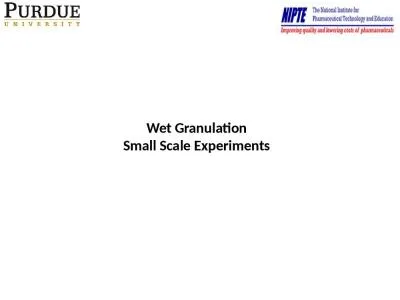PPT-Good data structure experiments are
Author : pamella-moone | Published Date : 2018-03-13
rare Trevor Brown Technion slides at httptbrownpro Why do we perform experiments To answer questions about data structures Is one data structure faster than another
Presentation Embed Code
Download Presentation
Download Presentation The PPT/PDF document "Good data structure experiments are" is the property of its rightful owner. Permission is granted to download and print the materials on this website for personal, non-commercial use only, and to display it on your personal computer provided you do not modify the materials and that you retain all copyright notices contained in the materials. By downloading content from our website, you accept the terms of this agreement.
Good data structure experiments are: Transcript
Download Rules Of Document
"Good data structure experiments are"The content belongs to its owner. You may download and print it for personal use, without modification, and keep all copyright notices. By downloading, you agree to these terms.
Related Documents














